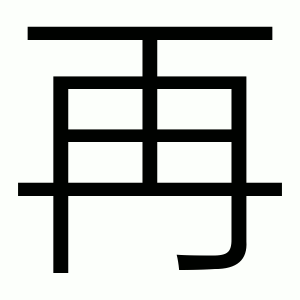再
- again, once more;
Etymology
Composed of 冉 (representing stacked wooden pieces, “to advance upward”) and 一 (one).
The imagery is of placing one more layer upon what already exists - “again, repeated.”
Original gloss “two” survives only as an archaic meaning; for the numeral 2, 二 is standard.
Semantic range:
- again, once more, repeatedly;
- second time, repetition;
- prefix “re-” (재활용 reuse, 재시험 retest, etc.);
- archaic: the number two (rare).
Usage in Korean
再三 (재삼) — repeatedly, over and over
再見 (재견) — goodbye; literally “see again”
再生 (재생) — regeneration, replay, recycling
再考 (재고) — reconsideration
再婚 (재혼) — remarriage
Words that derived from 再
Additional notes
In Korean and Sino-Xenic vocabularies, 再- functions like the English prefix re- (“do again”), forming many compound terms.
In Classical Chinese texts, 再 often marks repetition or a second occurrence (e.g. 再拜 “to bow twice,” a gesture of respect).
Japanese reading ふたたび (futatabi) preserves the older “twice/again” nuance in native usage.
